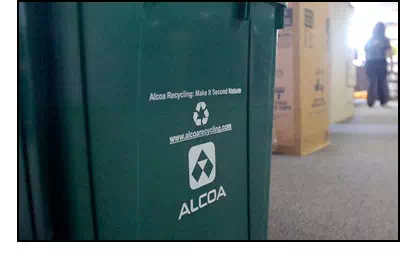 Managing Specific Wastes - Office Wastes
Managing Specific Wastes - Office Wastes
Overview
For the purpose of this discussion, office waste refers to what we think of as "municipal waste" and does not include electronic waste (e-waste), hazardous waste, universal waste or regulated medical waste, which are discussed elsewhere on HERC. Rules regarding municipal solid waste that affect dental offices are mostly written and enforced at the state and local levels. Such rules may include mandatory requirements for recycling certain materials (e.g., aluminum, glass, plastics, newspaper, corrugated paper) and/or a list of restricted wastes (e.g., electronics, fluorescent bulbs, etc.).
This section focuses on best management practices (BMPs) that can be implemented by dental offices to reduce the burden on our landfills, benefit the environment and decrease your operating costs. In some localities, certain BMPs are required by law. Be certain to investigate and comply with your solid waste state laws and local ordinances.
Waste Segregation
Regulated wastes, including hazardous waste (e.g., amalgam, x-ray wastes), universal wastes (fluorescent bulbs), medical waste, unused pharmaceuticals, and e-waste are much more expensive to manage and dispose of than common solid waste. Add a little hazardous waste to a lot of what would otherwise be non-hazardous waste, and you have turned a small problem into a big one. By properly segregating wastes, you can avoid having to pay premium prices needlessly. Here are some tips on segregation:
- Establish an identification protocol and educate workers on identification of wastes.
- Clearly marking waste disposal containers.
- Post signage to prevent misuse of containers, and conduct regular inspections of waste containers.
- Have proper hazardous waste cleanup equipment available (e.g., mercury spill kits), and clean up spills only with proper materials and equipment.
Waste Reduction
Many dental offices have gone beyond minimum regulatory requirements and have implemented a waste reduction program. In general, waste reduction can improve the efficiency of your operation while reducing its environmental impact. Benefits include:
- Reduced material waste, waste handling and disposal costs.
- Reduced liability (environmental liability, storage and disposal costs).
- Improved workplace environment and health and safety (fewer lost person-days).
- Improved company image (marketing advantage).
- Improved process efficiencies, productivity and bottom line benefits.
Involve all employees in your waste reduction efforts. Keep them informed of the goals and objectives of your program. Set up a staff waste reduction committee and promote your 3Rs (Reduce, Reuse, Recycle) initiatives to your staff. Track your progress by measuring changes in your waste volume.
Here are some tips that can help reduce your waste volume:
Reduce:
- Implement a "first-in, first-out" inventory system to use oldest stock first, particularly for products with a limited shelf life.
- Replace incandescent light bulbs with long lasting, energy efficient halogen or fluorescent versions.
- Encourage the purchase and use of "environmentally friendly" reusable or recyclable materials and packaging and/or products that contain recycled content.
- Be creative! For example, offer old equipment and off-spec. materials to schools or charitable organizations; donate old denture models to schools to educate students on oral health techniques; and give used wax, old plaster and tools to artists, craft classes, or students training in dentistry/medicine.
- Replace disposable products (paper bibs, gowns, table covers, towels etc.) with reusable (cloth/textile) alternatives. Contract a linen and laundry supply service to clean and supply these items.
- Use rechargeable batteries in equipment rather than disposable.
- Work with suppliers to cut down on excess packaging or use reusable packaging.
- Implement solid waste prevention options with regard to meeting Health Insurance Portability and Accountability Act (HIPPA) obligations (e.g., only create documents when necessary, reduce form copies to the minimum needed).
- Assess need for photocopies and print only what is needed.
- Increase double-sided copying in central copy areas.
- Keep records on microfiche or double-side copies for paper documents.
- Consolidate multiple forms and reduce extra copies.
- Keep report and memo writing to a minimum and limit distribution.
Reuse:
- Reuse scrap paper, envelopes, etc. for notes, messages and draft work.
- Reuse plastic film mounts, sterilization plastic, paper bags and cardboard boxes.
- Encourage proper handling of these and all other materials/equipment to help prolong their life.
- Utilize tools and hygiene products made of durable materials that can be sterilized and reused. For example, purchase durable plastic or metal suction tips that can be sterilized.
- Supply reusable mugs for coffee or encourage staff to bring their own. Use reusable coffee filters or purchase a coffee maker with a built-in filter or switch to unbleached filters.
Recycle:
- Segregate all waste materials to minimize contamination and to increase their recycling potential.
- Participate in your building's recycling program or encourage the development of a program for solid non-hazardous wastes including fine paper, cardboard, plastics and container glass.
- Recycle computer and photocopier toner cartridges.
More Resources
Waste Reduction, Reuse and Recycling Pamphlets Informational Material Links. Useful resources organized by the New York Department of Environmental Conservation.
For more information, see the HERC section on Solid Waste Reduction.



